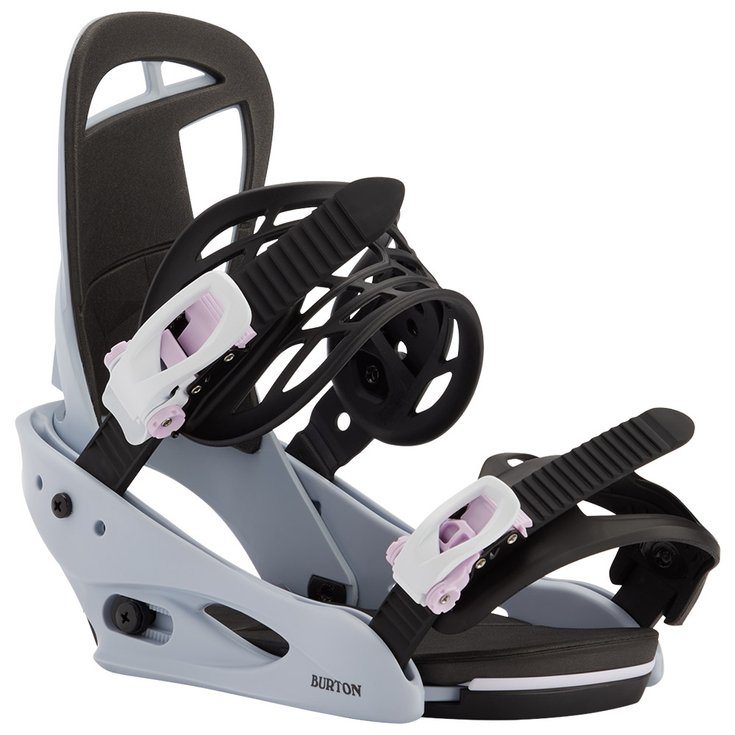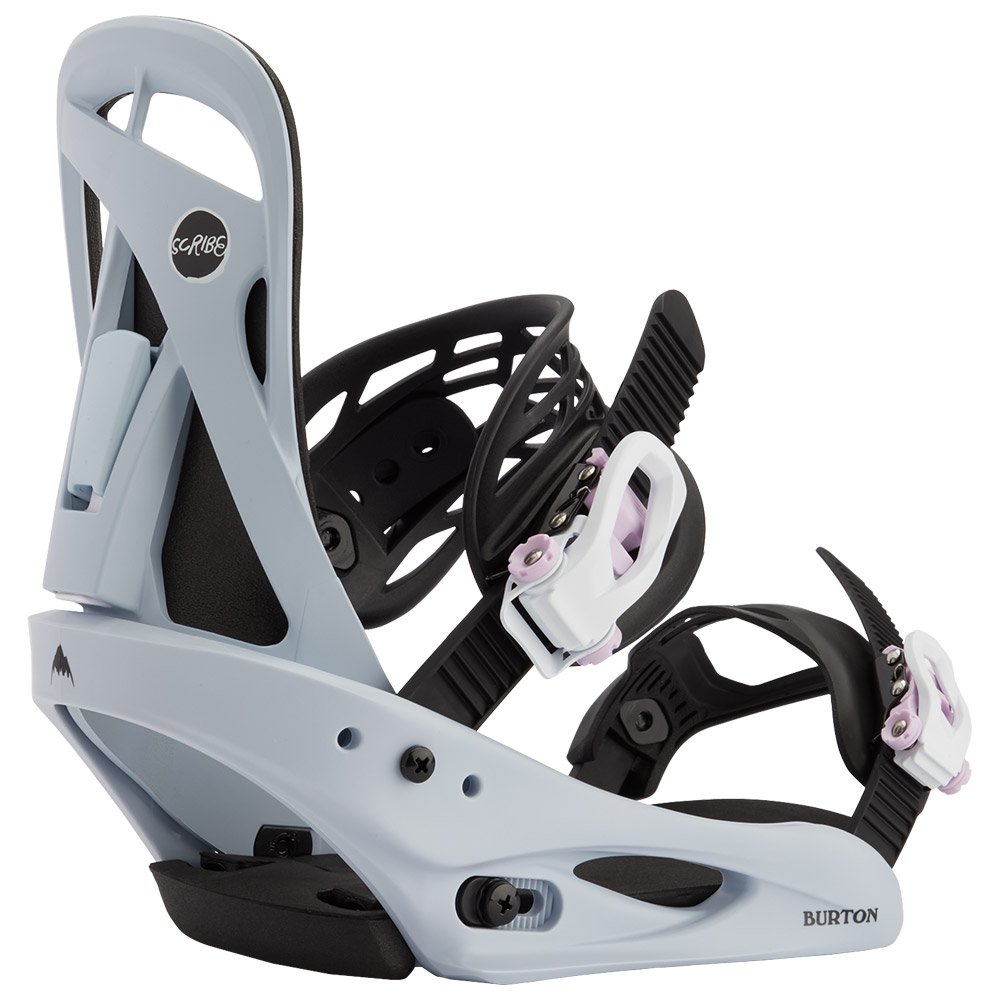18250784
Scribe Light Periwinkle
https://www.glisshop.co.uk/snowboard-bindings/burton/scribe-light-periwinkle18250784
Burton
Women
Winter 2021
18250784
Thanks to the Scribe Light Periwinkle women's snowboard binding, set the pace in your runs while maintaining ease and comfort throughout the day.
https://glisshop-glisshop-fr-storage.omn.proximis.com/Imagestorage/imagesSynchro/0/0/549d8d08f66eb0d3f04882794837c2cb22eeb54f_VH21BURTBIN036_0.jpeg
https://glisshop-glisshop-fr-storage.omn.proximis.com/Imagestorage/imagesSynchro/0/0/6804db9f778eb2cc611b3bb22efea23601af7c83_VH21BURTBIN036_1.jpeg
https://glisshop-glisshop-fr-storage.omn.proximis.com/Imagestorage/imagesSynchro/0/0/405418589609b2922f855dad502e3a7fa7ff4307_VH21BURTBIN036_2.jpeg
https://glisshop-glisshop-fr-storage.omn.proximis.com/Imagestorage/imagesSynchro/0/0/4f05860e5785f5f62ac66a749a67d5606c6aae8d_VH21BURTBIN036_3.jpeg
OutOfStock
179.91
GBP
179.91
GBP_VAT_royaume_uni
SEK_VAT_france
1643.82
2348.82
SEK
packs always have stock if there is a price
Unavailable
SEK_VAT_france_corse
1643.82
2348.82
SEK
packs always have stock if there is a price
Unavailable
SEK_VAT_royaume_uni
1643.82
2348.82
SEK
packs always have stock if there is a price
Unavailable
SEK_VAT_espagne
1657.52
2348.82
SEK
packs always have stock if there is a price
Unavailable
SEK_VAT_italie
1671.22
2348.82
SEK
packs always have stock if there is a price
Unavailable
SEK_VAT_allemagne
1630.13
2348.82
SEK
packs always have stock if there is a price
Unavailable
SEK_VAT_pays_bas
1657.52
2348.82
SEK
packs always have stock if there is a price
Unavailable
SEK_VAT_belgique
1657.52
2348.82
SEK
packs always have stock if there is a price
Unavailable
SEK_VAT_suisse
1480.81
2348.82
SEK
packs always have stock if there is a price
Unavailable
SEK_VAT_suede
1712.32
2348.82
SEK
packs always have stock if there is a price
Unavailable
SEK_VAT_danemark
1643.82
2348.82
SEK
packs always have stock if there is a price
Unavailable
SEK_VAT_monaco
1643.82
2348.82
SEK
packs always have stock if there is a price
Unavailable
SEK_VAT_luxembourg
1602.73
2348.82
SEK
packs always have stock if there is a price
Unavailable
SEK_VAT_irlande
1643.82
2348.82
SEK
packs always have stock if there is a price
Unavailable
SEK_VAT_portugal
1643.82
2348.82
SEK
packs always have stock if there is a price
Unavailable
SEK_VAT_autriche
1643.82
2348.82
SEK
packs always have stock if there is a price
Unavailable
SEK_VAT_pologne
1643.82
2348.82
SEK
packs always have stock if there is a price
Unavailable
SEK_VAT_finlande
1719.17
2348.82
SEK
packs always have stock if there is a price
Unavailable
SEK_VAT_slovenie
1643.82
2348.82
SEK
packs always have stock if there is a price
Unavailable
SEK_VAT_france
1643.82
2348.82
SEK
packs always have stock if there is a price
Unavailable
SEK_VAT_france_corse
1643.82
2348.82
SEK
packs always have stock if there is a price
Unavailable
SEK_VAT_royaume_uni
1643.82
2348.82
SEK
packs always have stock if there is a price
Unavailable
SEK_VAT_espagne
1657.52
2348.82
SEK
packs always have stock if there is a price
Unavailable
SEK_VAT_italie
1671.22
2348.82
SEK
packs always have stock if there is a price
Unavailable
SEK_VAT_allemagne
1630.13
2348.82
SEK
packs always have stock if there is a price
Unavailable
SEK_VAT_pays_bas
1657.52
2348.82
SEK
packs always have stock if there is a price
Unavailable
SEK_VAT_belgique
1657.52
2348.82
SEK
packs always have stock if there is a price
Unavailable
SEK_VAT_suisse
1480.81
2348.82
SEK
packs always have stock if there is a price
Unavailable
SEK_VAT_suede
1712.32
2348.82
SEK
packs always have stock if there is a price
Unavailable
SEK_VAT_danemark
1643.82
2348.82
SEK
packs always have stock if there is a price
Unavailable
SEK_VAT_monaco
1643.82
2348.82
SEK
packs always have stock if there is a price
Unavailable
SEK_VAT_luxembourg
1602.73
2348.82
SEK
packs always have stock if there is a price
Unavailable
SEK_VAT_irlande
1643.82
2348.82
SEK
packs always have stock if there is a price
Unavailable
SEK_VAT_portugal
1643.82
2348.82
SEK
packs always have stock if there is a price
Unavailable
SEK_VAT_autriche
1643.82
2348.82
SEK
packs always have stock if there is a price
Unavailable
SEK_VAT_pologne
1643.82
2348.82
SEK
packs always have stock if there is a price
Unavailable
SEK_VAT_finlande
1719.17
2348.82
SEK
packs always have stock if there is a price
Unavailable
SEK_VAT_slovenie
1643.82
2348.82
SEK
packs always have stock if there is a price
Unavailable
GBP_VAT_france
179.91
179.91
GBP
packs always have stock if there is a price
Unavailable
GBP_VAT_france_corse
179.91
179.91
GBP
packs always have stock if there is a price
Unavailable
GBP_VAT_espagne
181.41
179.91
GBP
packs always have stock if there is a price
Unavailable
GBP_VAT_italie
182.91
179.91
GBP
packs always have stock if there is a price
Unavailable
GBP_VAT_allemagne
178.41
179.91
GBP
packs always have stock if there is a price
Unavailable
GBP_VAT_pays_bas
181.41
179.91
GBP
packs always have stock if there is a price
Unavailable
GBP_VAT_belgique
181.41
179.91
GBP
packs always have stock if there is a price
Unavailable
GBP_VAT_suisse
162.07
179.91
GBP
packs always have stock if there is a price
Unavailable
GBP_VAT_suede
187.41
179.91
GBP
packs always have stock if there is a price
Unavailable
GBP_VAT_danemark
179.91
179.91
GBP
packs always have stock if there is a price
Unavailable
GBP_VAT_monaco
179.91
179.91
GBP
packs always have stock if there is a price
Unavailable
GBP_VAT_luxembourg
175.41
179.91
GBP
packs always have stock if there is a price
Unavailable
GBP_VAT_irlande
179.91
179.91
GBP
packs always have stock if there is a price
Unavailable
GBP_VAT_portugal
179.91
179.91
GBP
packs always have stock if there is a price
Unavailable
GBP_VAT_autriche
179.91
179.91
GBP
packs always have stock if there is a price
Unavailable
GBP_VAT_pologne
179.91
179.91
GBP
packs always have stock if there is a price
Unavailable
GBP_VAT_finlande
188.16
179.91
GBP
packs always have stock if there is a price
Unavailable
GBP_VAT_slovenie
179.91
179.91
GBP
packs always have stock if there is a price
Unavailable
GBP_VAT_france
179.91
179.91
GBP
packs always have stock if there is a price
Unavailable
GBP_VAT_france_corse
179.91
179.91
GBP
packs always have stock if there is a price
Unavailable
GBP_VAT_espagne
181.41
179.91
GBP
packs always have stock if there is a price
Unavailable
GBP_VAT_italie
182.91
179.91
GBP
packs always have stock if there is a price
Unavailable
GBP_VAT_allemagne
178.41
179.91
GBP
packs always have stock if there is a price
Unavailable
GBP_VAT_pays_bas
181.41
179.91
GBP
packs always have stock if there is a price
Unavailable
GBP_VAT_belgique
181.41
179.91
GBP
packs always have stock if there is a price
Unavailable
GBP_VAT_suisse
162.07
179.91
GBP
packs always have stock if there is a price
Unavailable
GBP_VAT_suede
187.41
179.91
GBP
packs always have stock if there is a price
Unavailable
GBP_VAT_danemark
179.91
179.91
GBP
packs always have stock if there is a price
Unavailable
GBP_VAT_monaco
179.91
179.91
GBP
packs always have stock if there is a price
Unavailable
GBP_VAT_luxembourg
175.41
179.91
GBP
packs always have stock if there is a price
Unavailable
GBP_VAT_irlande
179.91
179.91
GBP
packs always have stock if there is a price
Unavailable
GBP_VAT_portugal
179.91
179.91
GBP
packs always have stock if there is a price
Unavailable
GBP_VAT_autriche
179.91
179.91
GBP
packs always have stock if there is a price
Unavailable
GBP_VAT_pologne
179.91
179.91
GBP
packs always have stock if there is a price
Unavailable
GBP_VAT_finlande
188.16
179.91
GBP
packs always have stock if there is a price
Unavailable
GBP_VAT_slovenie
179.91
179.91
GBP
packs always have stock if there is a price
Unavailable
CHF_VAT_france
191.9
191.9
CHF
packs always have stock if there is a price
Unavailable
CHF_VAT_france_corse
191.9
191.9
CHF
packs always have stock if there is a price
Unavailable
CHF_VAT_royaume_uni
191.9
191.9
CHF
packs always have stock if there is a price
Unavailable
CHF_VAT_espagne
193.5
191.9
CHF
packs always have stock if there is a price
Unavailable
CHF_VAT_italie
195.1
191.9
CHF
packs always have stock if there is a price
Unavailable
CHF_VAT_allemagne
190.3
191.9
CHF
packs always have stock if there is a price
Unavailable
CHF_VAT_pays_bas
193.5
191.9
CHF
packs always have stock if there is a price
Unavailable
CHF_VAT_belgique
193.5
191.9
CHF
packs always have stock if there is a price
Unavailable
CHF_VAT_suisse
172.87
191.9
CHF
packs always have stock if there is a price
Unavailable
CHF_VAT_suede
199.9
191.9
CHF
packs always have stock if there is a price
Unavailable
CHF_VAT_danemark
191.9
191.9
CHF
packs always have stock if there is a price
Unavailable
CHF_VAT_monaco
191.9
191.9
CHF
packs always have stock if there is a price
Unavailable
CHF_VAT_luxembourg
187.11
191.9
CHF
packs always have stock if there is a price
Unavailable
CHF_VAT_irlande
191.9
191.9
CHF
packs always have stock if there is a price
Unavailable
CHF_VAT_portugal
191.9
191.9
CHF
packs always have stock if there is a price
Unavailable
CHF_VAT_autriche
191.9
191.9
CHF
packs always have stock if there is a price
Unavailable
CHF_VAT_pologne
191.9
191.9
CHF
packs always have stock if there is a price
Unavailable
CHF_VAT_finlande
200.7
191.9
CHF
packs always have stock if there is a price
Unavailable
CHF_VAT_slovenie
191.9
191.9
CHF
packs always have stock if there is a price
Unavailable
CHF_VAT_france
191.9
191.9
CHF
packs always have stock if there is a price
Unavailable
CHF_VAT_france_corse
191.9
191.9
CHF
packs always have stock if there is a price
Unavailable
CHF_VAT_royaume_uni
191.9
191.9
CHF
packs always have stock if there is a price
Unavailable
CHF_VAT_espagne
193.5
191.9
CHF
packs always have stock if there is a price
Unavailable
CHF_VAT_italie
195.1
191.9
CHF
packs always have stock if there is a price
Unavailable
CHF_VAT_allemagne
190.3
191.9
CHF
packs always have stock if there is a price
Unavailable
CHF_VAT_pays_bas
193.5
191.9
CHF
packs always have stock if there is a price
Unavailable
CHF_VAT_belgique
193.5
191.9
CHF
packs always have stock if there is a price
Unavailable
CHF_VAT_suisse
172.87
191.9
CHF
packs always have stock if there is a price
Unavailable
CHF_VAT_suede
199.9
191.9
CHF
packs always have stock if there is a price
Unavailable
CHF_VAT_danemark
191.9
191.9
CHF
packs always have stock if there is a price
Unavailable
CHF_VAT_monaco
191.9
191.9
CHF
packs always have stock if there is a price
Unavailable
CHF_VAT_luxembourg
187.11
191.9
CHF
packs always have stock if there is a price
Unavailable
CHF_VAT_irlande
191.9
191.9
CHF
packs always have stock if there is a price
Unavailable
CHF_VAT_portugal
191.9
191.9
CHF
packs always have stock if there is a price
Unavailable
CHF_VAT_autriche
191.9
191.9
CHF
packs always have stock if there is a price
Unavailable
CHF_VAT_pologne
191.9
191.9
CHF
packs always have stock if there is a price
Unavailable
CHF_VAT_finlande
200.7
191.9
CHF
packs always have stock if there is a price
Unavailable
CHF_VAT_slovenie
191.9
191.9
CHF
packs always have stock if there is a price
Unavailable
EUR_VAT_france
139.9
199.9
EUR
packs always have stock if there is a price
Unavailable
EUR_VAT_france_corse
139.9
199.9
EUR
packs always have stock if there is a price
Unavailable
EUR_VAT_royaume_uni
139.9
199.9
EUR
packs always have stock if there is a price
Unavailable
EUR_VAT_espagne
141.07
199.9
EUR
packs always have stock if there is a price
Unavailable
EUR_VAT_italie
142.23
199.9
EUR
packs always have stock if there is a price
Unavailable
EUR_VAT_allemagne
138.73
199.9
EUR
packs always have stock if there is a price
Unavailable
EUR_VAT_pays_bas
141.07
199.9
EUR
packs always have stock if there is a price
Unavailable
EUR_VAT_belgique
141.07
199.9
EUR
packs always have stock if there is a price
Unavailable
EUR_VAT_suisse
126.03
199.9
EUR
packs always have stock if there is a price
Unavailable
EUR_VAT_suede
145.73
199.9
EUR
packs always have stock if there is a price
Unavailable
EUR_VAT_danemark
139.9
199.9
EUR
packs always have stock if there is a price
Unavailable
EUR_VAT_monaco
139.9
199.9
EUR
packs always have stock if there is a price
Unavailable
EUR_VAT_luxembourg
136.4
199.9
EUR
packs always have stock if there is a price
Unavailable
EUR_VAT_irlande
139.9
199.9
EUR
packs always have stock if there is a price
Unavailable
EUR_VAT_portugal
139.9
199.9
EUR
packs always have stock if there is a price
Unavailable
EUR_VAT_autriche
139.9
199.9
EUR
packs always have stock if there is a price
Unavailable
EUR_VAT_pologne
139.9
199.9
EUR
packs always have stock if there is a price
Unavailable
EUR_VAT_finlande
146.31
199.9
EUR
packs always have stock if there is a price
Unavailable
EUR_VAT_slovenie
139.9
199.9
EUR
packs always have stock if there is a price
Unavailable
EUR_VAT_france
139.9
199.9
EUR
packs always have stock if there is a price
Unavailable
EUR_VAT_france_corse
139.9
199.9
EUR
packs always have stock if there is a price
Unavailable
EUR_VAT_royaume_uni
139.9
199.9
EUR
packs always have stock if there is a price
Unavailable
EUR_VAT_espagne
141.07
199.9
EUR
packs always have stock if there is a price
Unavailable
EUR_VAT_italie
142.23
199.9
EUR
packs always have stock if there is a price
Unavailable
EUR_VAT_allemagne
138.73
199.9
EUR
packs always have stock if there is a price
Unavailable
EUR_VAT_pays_bas
141.07
199.9
EUR
packs always have stock if there is a price
Unavailable
EUR_VAT_belgique
141.07
199.9
EUR
packs always have stock if there is a price
Unavailable
EUR_VAT_suisse
126.03
199.9
EUR
packs always have stock if there is a price
Unavailable
EUR_VAT_suede
145.73
199.9
EUR
packs always have stock if there is a price
Unavailable
EUR_VAT_danemark
139.9
199.9
EUR
packs always have stock if there is a price
Unavailable
EUR_VAT_monaco
139.9
199.9
EUR
packs always have stock if there is a price
Unavailable
EUR_VAT_luxembourg
136.4
199.9
EUR
packs always have stock if there is a price
Unavailable
EUR_VAT_irlande
139.9
199.9
EUR
packs always have stock if there is a price
Unavailable
EUR_VAT_portugal
139.9
199.9
EUR
packs always have stock if there is a price
Unavailable
EUR_VAT_autriche
139.9
199.9
EUR
packs always have stock if there is a price
Unavailable
EUR_VAT_pologne
139.9
199.9
EUR
packs always have stock if there is a price
Unavailable
EUR_VAT_finlande
146.31
199.9
EUR
packs always have stock if there is a price
Unavailable
EUR_VAT_slovenie
139.9
199.9
EUR
packs always have stock if there is a price
Unavailable
/Snowboard/Snowboard bindings
brand - 121632
109046 - GLIS_CHAR_SNOW_BINDING_ENTRY_SYSTEM_10055
109047 - GLIS_CHAR_SNOW_BINDING_CATEGORY_10061
211232 - 1
107027 - GLIS_NAME_TYPO_PRODUCT_26
211236 - GLIS_PROD_HIGHLIGHT_SEASON_51
21127769 - 21127766














